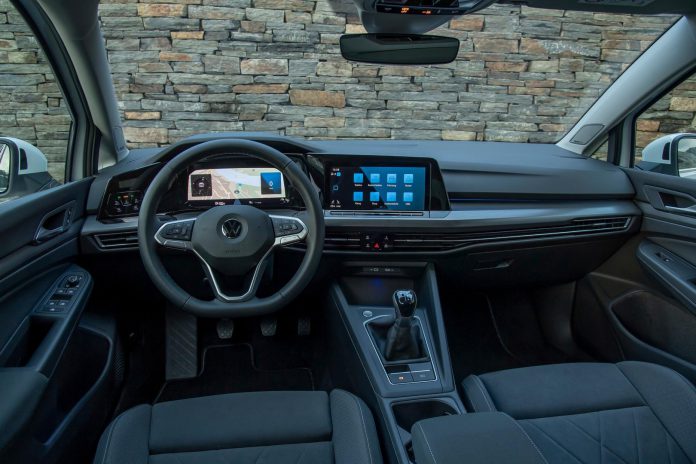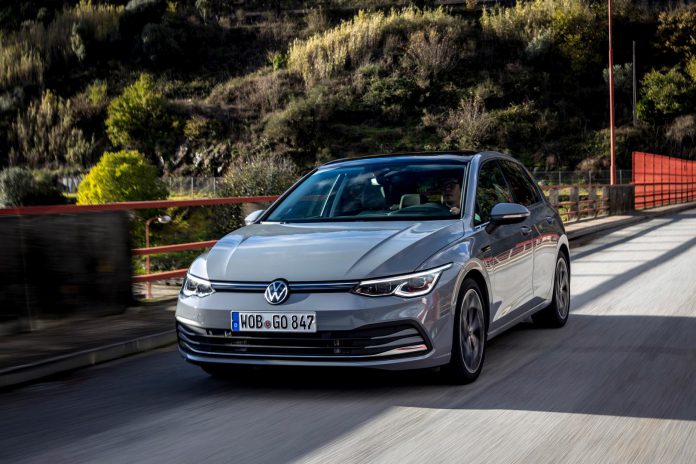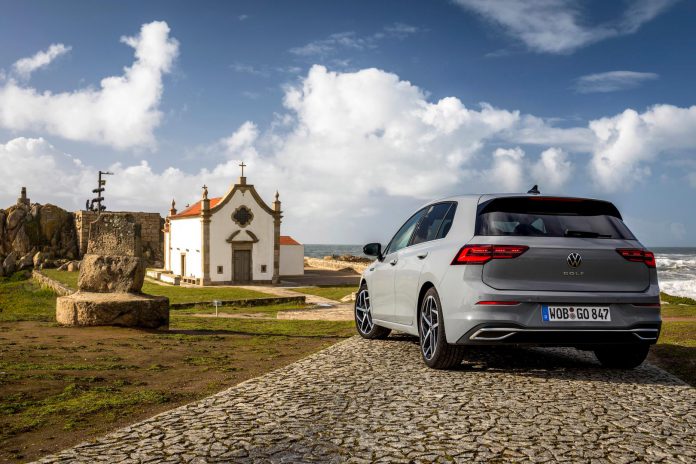All-new or just a facelift? Not a single exterior panel of the eight-generation Golf is carried over from its predecessor, yet you have to look twice to make it out: The new Golf, just launched near Porto on the Atlantic Coast of Portugal, looks decidedly evolutionary. Only the front end might stir up a discussion: The illuminated eyeliners and the small, thin front grille deviate from the brutalism of many competitors, giving VW’s new core model a rather unintimidating appearance.
The changes are far more apparent inside the new Golf: The previous, conventional dashboard has been discarded for a fully digital layout with two TFT screens, a high center console and capacitive sensors instead of hard keys and buttons. For a mass-market car, and the Golf is still one of the best-selling cars in the world, this is a remarkable step.
This does not come without risks: First, we are not sure that everyone is really interested in such a futuristic interface, but on top of it, VW had to delay the market launch of the new Golf to deal with electronic gremlins. We are not sure they have worked them all out at this point.
But when the system is operative, it is actually quite impressive and on par with the MBUX system in the Mercedes-Benz A-Class. What’s less impressive: VW ditched Dynaudio as the supplier for the Golf’s high-end audio system – in favour of the decidedly more mainstream Harman/Kardon. Is this the response to Daimler’s Burmester hifi-system?
We like the comfort and the fit and finish in the new Golf’s cabin: Ingress and egress through the four standard doors is easy, the seats are firm but comfortable, and there is plenty of head- and kneeroom on all seats.
We drove two engines with 150 horsepower: The smooth and powerful 2.0-liter TDI – and the somewhat less convincing, mild-hybridised 1.5-liter TSI. We preferred the TDI’s sheer power, its sound, and we suspect it will be more economical than the petrol engine as well, despite the latter’s complex and expensive hybrid module. The seven-speed dual-clutch automatic works flawlessly.
Not only did we like the TDI better than the TSI, we also felt the Golf feels more planted with the diesel engine. Roadholding and steering are at their best in this version, yet the Golf is comfortable enough even for long trips. On those trips, drivers will also appreciate the excellent matrix LED headlights, optional but with class-leading performance.
Going forward, we expect to see more interesting powertrain options: Diesel fans will be able to order the GTD with a full 200 horsepower; there will be two plug-in hybrids, heavy but powerful with 204 and 245 horsepower; the GTI will make close to 250 horsepower, and the next Golf R is expected to deliver around 330 horsepower.
Europe will get all of these engines, while the US market henceforth gets only the GTI and the Golf R. The new technological basis is impressive, and we can’t wait for VW to bring on the power next year.



